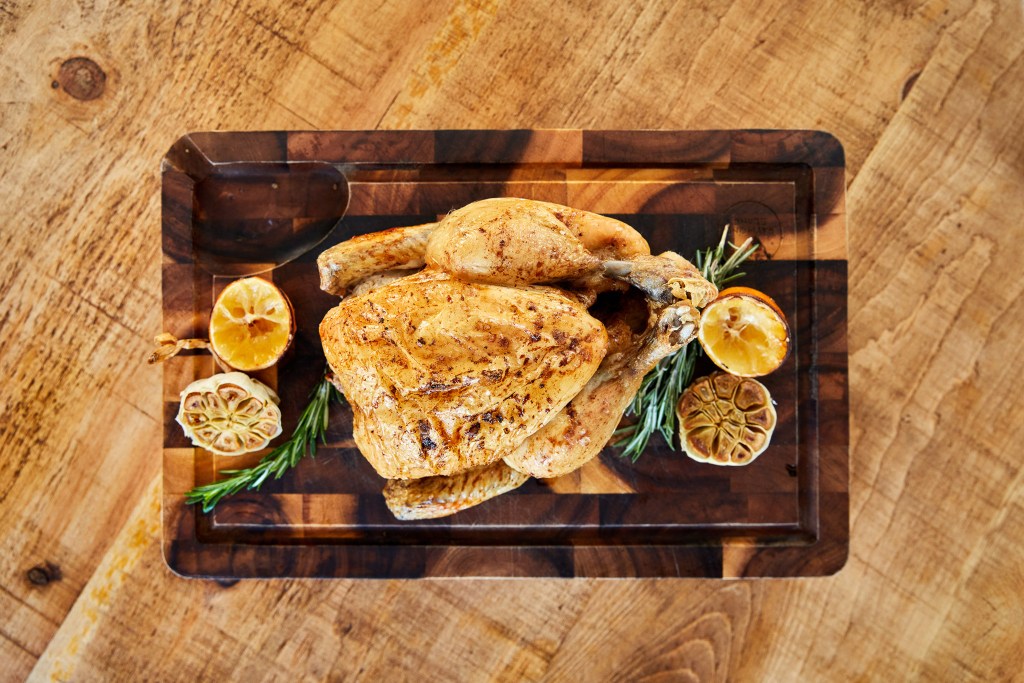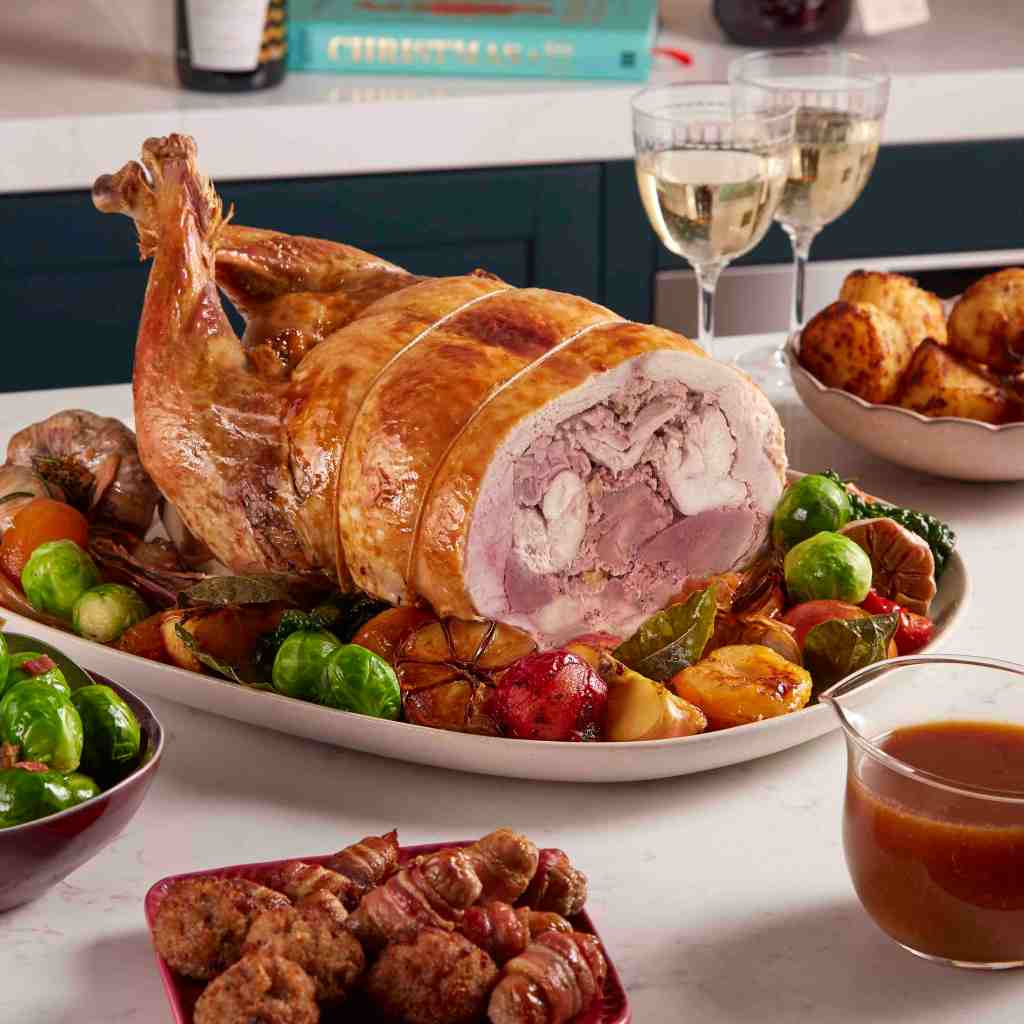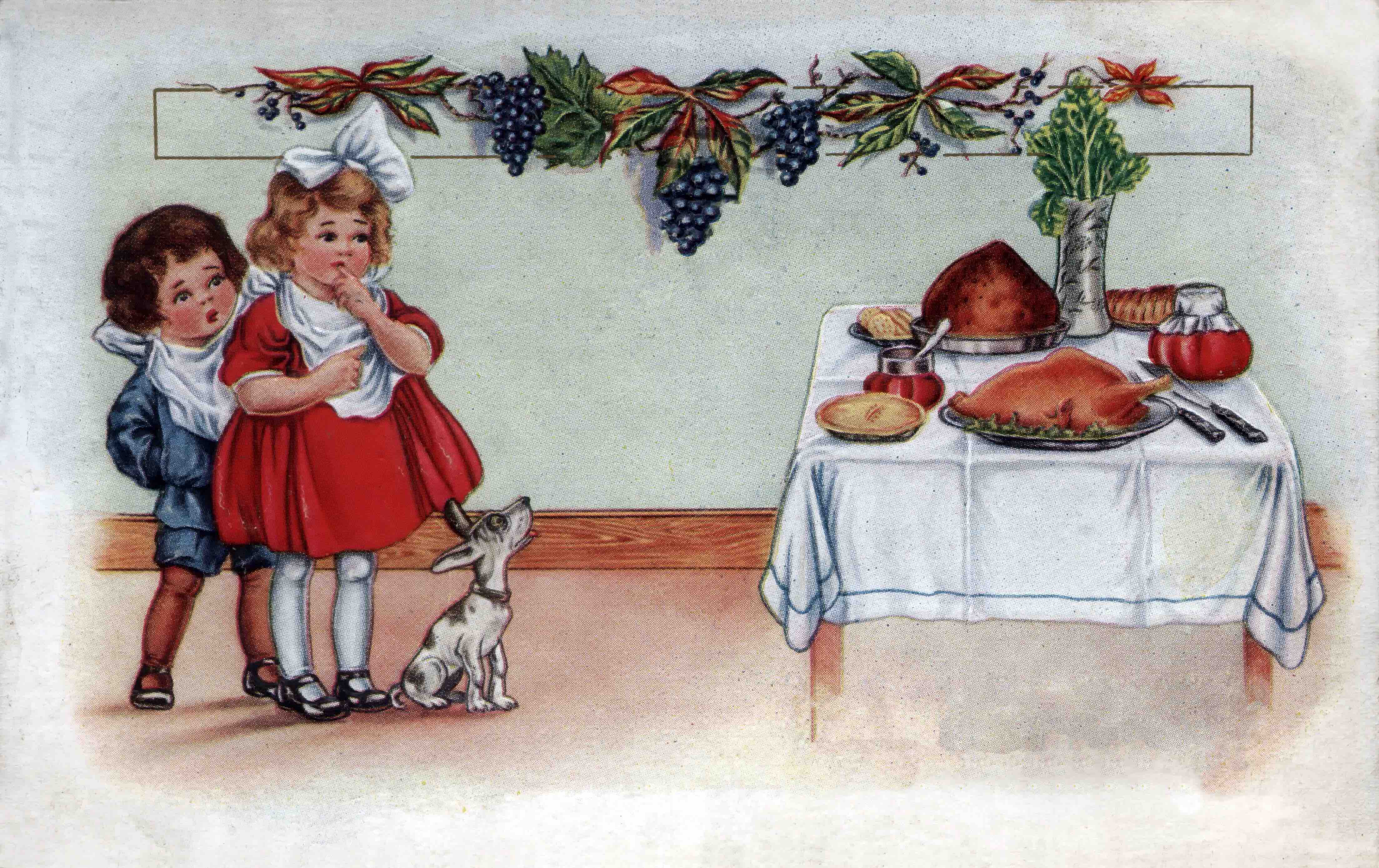‘It was a Turkey! He never could have stood upon his legs, that bird. He would have snapped ’em short off in a minute, like sticks of sealing-wax.’ (A Christmas Carol.)
And there is exactly the problem with festive fowl. In most cases, we get turkey. And usually we get it far too big, which leads to all the problems of using the thing up over the course of a week. It may have been fine for Bob Cratchit’s large family but for most people, the mammoth turkey isn’t the way to go. A turkey is a fine bird (one of the trinity of actually useful things, with potatoes and tomatoes, to come out of the European discovery of America) – but it’s not the only option. There are other pre-turkey traditions and some new ones worth thinking about for the Christmas season – I mean, over 12 whole days you can’t eat turkey every day. Consider these:
Capon
Strictly, capon is a castrated cockerel – which, like other eunuchs, runs to fat and is less active than your normal rooster. It’s a very traditional bird for the Christmas table, especially in Tuscany and Spain; France is famous for it. But the spoilsport regulators in the UK don’t allow for castration, so instead poultry producers are simply raising roosters or cockerel slowly. Emma Wilkinson of Herb Fed says her Christmas roosters take twice as long to rear as standard chickens, and the result is a much larger bird – it can run to 12lb – with a tender, flavoursome flesh, less dry than turkey. Given a choice between turkey and capon, I’d go for the latter.

Goose
Well, you know about goose, don’t you? The flesh is darker and more flavoursome than turkey and there is, moreover, far less of it. You’ll get two lunches out of a goose, but what you also get is quantities of very good fat for roasting potatoes. The great thing about geese is that they’re sufficiently bolshie to make it far more difficult to have battery geese than battery chicken or turkey so they’ll probably be free range. They also give you the chance to get away from the turkey stuffing: chef Darina Allen recommends a stuffing made from cooking apples and potatoes (sweat 1lb of chopped onions in butter, add 1lb of chopped cooking apples and cook until fluffy; finally add 2lb of floury potatoes, cooked in their skins, peeled and mashed) and serving either with apple sauce or a compote of quince. Yum. Pipers Farm does a very good goose.
Boar
Remember the ‘Boar’s Head Carol’? That tells us something, no? Sourcing genuinely wild boar is tricky in Britain, but it is possible. Otherwise opt for European boar where the animal is hunted in forests: think Obelix. In her cookbook, Constance Spry gives a recipe for boar’s head which would be the pride of any sideboard but would take an age to do; a roasting joint is easier. Wild boar is gamey and dark and much lower in fat than normal pork – i.e. no crackling. But if you marinate a roasting joint in olive oil overnight, sear it in hot fat to brown the flesh, then wrap strips of streaky bacon round it with string and cook slowly (the Wild Meat Company suggests wrapping it in tinfoil, roasting at 180°C for 20 minutes per pound, and removing the foil half an hour before the end), the flesh will be moist, not dry. It would be very good with red cabbage.
Venison
This is the king of meats and a traditional dish over the Christmas season (it doesn’t have to be the centrepiece for Christmas Day, which really isn’t the time to try out a wholly new recipe). As with wild boar, though, it is very low in fat so needs a casing of bacon and a good smear of fat. For a haunch on the bone, allow 15-20 minutes of cooking time per pound, plus resting time. Most people marinade before cooking, usually in a mixture of red wine, olive oil and herbs and a few juniper berries. We should all be eating more venison; managing, viz, culling deer is the single most effective way to preserve woodland and forest habitat. So you can look your vegan friends in the eye when you serve this, perhaps with redcurrant or rowan sauce. (Or you could cheat and buy a nice but pricey venison wellington from Fortnum and Mason.) The Knepp estate regularly replenishes the venison in a range of cuts available from its online shop.
Partridge
If there’s just one or two of you for Christmas, too few for a big bird, you can still feast – on partridge. I serve it on Twelfth Night, with a halved poached pear on the side, just for fun. English grey-legged partridge has a better flavour than red, but it’s now endangered because of habitat loss, so most suppliers offer red-leg birds, including Castle Game. It’s a little bird and easy to roast plainly, for no more than 15-20 minutes at 200°C to stop it drying out. The obvious solution is to wrap it in streaky bacon to keep the breast moist, but that can mean the skin remains pale, so consider browning it by frying very briefly in butter before wrapping the bacon. Darina Allen recommends putting a vine leaf around the bird before the bacon if you have any, but it’s fine without. Serve with bread sauce and maybe straw potatoes, but roast spuds are fine too.

Six-bird roast
We’ve all heard of a three-bird roast – usually duck, pheasant and turkey – but how about twice as many birds? Fortnum and Mason probably has the ultimate bragging rights with this wildly expensive (£300!) but rather fabulous assembly of turkey, chicken, duck, guinea fowl, pheasant and partridge. It’s practically medieval in its layering and the home cook would be mad even to think of making it themselves – but if money is no object, it would be a memorable centrepiece.








Comments